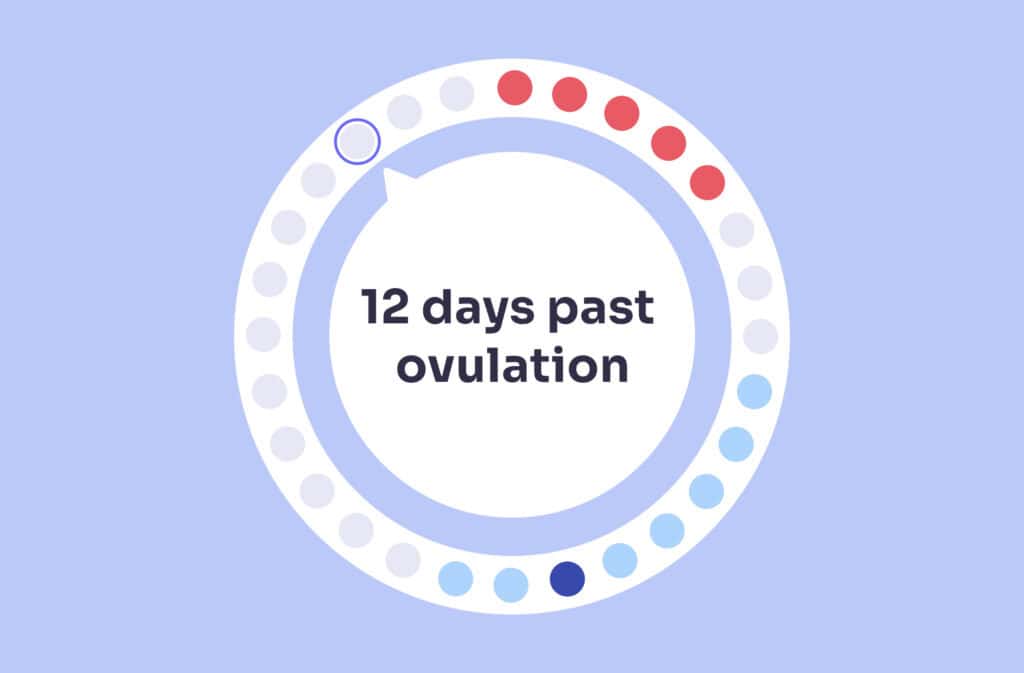Femia > Health Library > Pregnancy > Giving birth > Birth plan checklist: How to create your personalized guide for labor and delivery
Birth plan checklist: How to create your personalized guide for labor and delivery

- Updated Feb 11, 2025
- Published
CRAFTED BY HUMAN
Crafted by human At Femia, we provide accurate and up-to-date information at every stage of your journey, from trying to conceive, pregnancy and postnatal support. All content is created by a real person based on in-depth research and own professional experience. Femia ensures that you will receive expert advice, strict accuracy and a personalized approach from our authors/medical experts. Learn more about our editorial policy.
FACT CHECKED
Fact checked At Femia Health, we maintain the highest standards of editorial excellence in delivering content focused on helping you conceive, guiding you through pregnancy, and supporting you postpartum. Explore our content review principles to learn how we ensure the accuracy and quality of our health and lifestyle tips for every stage of your journey.
A birth plan is a useful tool to help you communicate your labor and delivery preferences to your healthcare team. Writing a birth plan can help you to understand what options are available and what you want your birth to look like.
Your healthcare provider can help you create a flexible and realistic birth plan. Download and customize our printable birth plan to simplify the process and help you get started.
A birth plan is a written document that outlines what you would like to happen and what you hope to avoid during your labor, delivery, and after the baby is born.
You don’t have to make a birth plan, but writing one can help you to think about how you would like to give birth. It can also be a useful tool to help you communicate your preferences with your healthcare provider.
Join thousands of moms-to-be who trust Femia for expert-backed
guidance during pregnancy and beyond
What is a birth plan and why is it important?
A birth plan lays out your preferences for how and where you would like to give birth as well as what you would like to happen after your baby is born. Some women find that writing a birth plan helps them to feel empowered and more prepared for labor.
The beauty of a birth plan is that it is completely personal to you—you can document your thoughts on anything from birthing partners to medical interventions to cultural considerations. Some women opt for a simple plan with just the essentials on it, while others prefer a detailed guide covering various scenarios.
When creating a birth plan, it’s important to keep flexibility in mind. While it’s helpful to have a clear idea of your preferences, labor and delivery can be unpredictable. Remember, it’s ok if things don’t go exactly as planned—sometimes, adjustments are necessary to ensure the best outcome for you and your baby.
👉Find out more: Best sex positions to induce labor: What works and what doesn’t
How to write a birth plan
Writing a birth plan can feel overwhelming when you start. Your healthcare provider should be able to offer you personalized guidance, but here’s a step-by-step guide to give you a general idea of the information you might want to include.
1. Reflect on your preferences
Take some time to really think about what matters most to you during labor and delivery. You may already have a clear idea about what you want your labor to look like, or you might have just started thinking about it. Consider things like who you want by your side, your birthing environment, and how you’d like to manage pain or medical interventions.
2. Do some research
Explore the options available for where you can give birth, what pain relief you can access, birthing positions, and what to expect in the first few hours after the delivery. Look at reputable websites from the country where you’re giving birth to help you understand what might be available to you. For example, the American College of Obstetricians and Gynecologists (ACOG) and the NHS offer detailed guidelines about labor and delivery.
3. Discuss your plan with your healthcare provider
Sharing your birth plan with your healthcare provider will ensure everyone is on the same page and give you the opportunity to discuss any concerns or ask any questions you have. Your healthcare provider also knows you and your pregnancy best, so they will be able to make personalized recommendations to help keep you and your baby safe.
And, remember: a birth plan is a guide, not a strict set of rules. You can change the plan at any time, and staying flexible will help you to navigate any unexpected changes.
Key elements of a birth plan checklist
Your birth plan can contain anything that you feel is important, but here is a birth plan checklist to help you:
- Personal information: Include your name, due date, emergency contact information, name of your healthcare provider, and any important medical history.
- Support team: Names of who you would like present during the birth and your preference for when visitors can arrive afterward.
- Labor preferences: Preferences on your birthing environment, birthing positions, and use of aids.
- Pain management: Preference on pain relief options, what you’re open to, and what you would prefer to avoid.
- Medical interventions: Your views on possible interventions such as induction, episiotomy, instrument delivery, fluids, and monitoring.
- Delivery preferences: Skin-to-skin practice, delayed cord clamping, and preferences about the environment in which an emergency C-section should happen if it has to.
- Postpartum care: How you would like to feed your baby, preferences on newborn procedures, and rooming choices.
- Additional: Include religious or cultural practices and anything else that’s important to you.
Birth plans for first-time moms
If you’re a first-time mom, then creating your birth plan may feel overwhelming. Your healthcare provider will be able to guide you best, but there are some things that you can do to prepare in the meantime:
- Get informed: Understanding your labor and delivery options is key. Your healthcare provider will be able to tell you the options available, but doing your own research can help, too. Taking childbirth classes and reading about pain relief options and procedures like induction can help you to feel more confident about making decisions.
- Use a template: Many women find it easier to print out a birth template and customize it to their preferences rather than trying to write their own from scratch.
- Keep it simple: Your birth plan can be as detailed or as simple as you would like. It can consist of a few key birth plan statements or go into more detail. However you choose to write your birth plan, making sure it’s realistic and flexible will help you to adapt if things don’t go to plan. Remember, a birth plan is a tool to help you express your wishes, not a rigid set of rules. You can change your mind at any time, and your healthcare team will be there to support you.
Questions to ask your healthcare provider
Your prenatal appointments are not only to check up on your and your baby’s health—-they’re also an excellent opportunity to discuss concerns and questions, including about your future labor and delivery. Here’s a list of helpful questions you might want to include:
- What environment is it possible for me to give birth in? (At home, a birthing center, in a hospital)
- At what point in labor should I go to the hospital?
- What is the hospital’s policy on monitoring and moving around during labor?
- What pain relief options will be available?
- How are unexpected emergencies handled; for example, if a C-section is needed?
- What emergency care is available for me or my baby should we need it? (This is relevant if you’re giving birth at home or in a birthing unit not attached to a major hospital)
- How long do you expect me and my baby to stay in the hospital after birth?
Birth plan statement examples and templates
Your pregnancy healthcare provider might provide you with a birth plan template; alternatively, you can find lots of different templates online. Here’s one, designed by Femia, that you can print off and customize yourself:
We’ve also put together a list of example birth plan statements that you can use in your birth plan or during labor:
- “I prefer to move freely during labor.”
- “I would like to try natural pain relief methods before opting for medication.”
- ”Please inform me before performing any medical interventions.”
- “I’d prefer X, only if it’s necessary.”
- ”I would like to make a decision about X at a later time.”
- “I would like immediate skin-to-skin contact after delivery.”
- ”I prefer delayed cord clamping, if possible.”
- I would like skin-to-skin contact immediately and for a minimum (amount of time), if possible.
Join thousands of moms-to-be who trust Femia for expert-backed
guidance during pregnancy and beyond
Hospital bag for mom and baby
As you enter the third trimester, it’s time to start thinking about the exciting (and sometimes daunting) task of packing your hospital bag. Your hospital bag should contain everything you and your baby will need for labor, delivery, and the postpartum stay. It’s a good idea to have your bag ready around 36 weeks to ensure you’re fully prepared ahead of time.
Here’s a hospital bag checklist to help you pack everything you and your baby will need:
C-section birth plan template: What to include
If you’re having a planned C-section, then making a birth plan is still a useful way to help you understand what options are available and help you communicate your preferences with your healthcare provider.
👉Find out more: C-section vs vaginal birth: What to know about benefits, risks, and recovery
While a C-section birth plan looks similar to a vaginal birth plan, there are some additional considerations that need to be covered. Here’s a handy C-section birth plan template, designed by Femia, to help you simplify the process of creating a C-section birth plan:
Things to consider for the birth plan
When creating your birth plan, it’s important to consider various factors to make sure your preferences align with what is possible and practical. Available options can depend on the facility where you will be giving birth. Here are some key considerations:
1. Hospital policies and facilities
- Check the policies on pain management, birthing positions, and medical interventions at your chosen hospital or birthing center.
- Ask about the availability of certain resources like birthing pools, private rooms, or peanut balls.
- Understand protocols for unexpected situations, such as cesarean deliveries or NICU care.
- Verify the hospital’s policies on the number of support people allowed in the room.
2. Cultural or religious needs
- Include any cultural or religious practices that are important to you, such as specific rituals, prayers, or dietary needs.
- Let your healthcare provider know about any customs you’d like to observe during or after delivery.
3. Specialist support
- Consider and plan for any specialist support you might want during or after your labor. For example, a doula can help support you through labor, or a lactation specialist can help you to initially breastfeed.
Questions from the Femia community
Do I need a birth plan if I’m having a scheduled C-section?
A birth plan is not mandatory, but it's a useful tool to have, regardless of the type of birth you’re planning. A c-section birth plan allows you to outline your preferences for environment, bonding, and postpartum care.
What if my birth doesn’t go according to the plan?
If your birth doesn’t go according to plan, that's okay. The key is to stay flexible and focus on making the best decisions for you and your baby in the moment. Your healthcare provider will be there to guide you, and the ultimate goal is to keep you and your baby safe.
Can I use a birth plan for a home birth?
Yes, a birth plan is helpful for home births to ensure midwives or doulas understand your preferences. It also means that you and your partner are on the same page about your preferences and can help everyone prepare for various scenarios, including transfer to a hospital if needed.
Should my partner or support person be involved in creating the birth plan?
Yes—involving your partner helps them understand your wishes and how best to support you during labor. Having a birth plan on hand can also help your support person to advocate for you during labor, especially if unexpected changes occur.
The bottom line
A birth plan is a great way to communicate your labor and delivery preferences with your healthcare team and birthing partners. It also helps you explore the available options, prioritize what’s important, and envision your ideal birth experience. However, flexibility is essential. Sometimes, unexpected challenges arise, and staying adaptable will help you to manage and adjust as needed.
During your third trimester, it’s a good idea to discuss your birth plan with your healthcare provider. Using a birth plan template can simplify the process. As you go through it together, they can answer any questions you have, address concerns, and guide you on how to make a plan that is realistic and flexible. Ultimately, the goal is a safe, healthy delivery for both you and your baby.
References
- “Labor and Delivery.” ACOG, www.acog.org/womens-health/pregnancy/labor-and-delivery.
- Website, Nhs. “How to Make a Birth Plan.” nhs.uk, 14 Nov. 2024, www.nhs.uk/pregnancy/labour-and-birth/preparing-for-the-birth/how-to-make-a-birth-plan.
- “Where to Give Birth: The Options.” nhs.uk, 14 Nov. 2024, www.nhs.uk/pregnancy/labour-and-birth/preparing-for-the-birth/where-to-give-birth-the-options.

Pregnancy brings a fresh and vibrant glow from within – but it doesn’t do much for your lips. Let’s check if you can get lip fillers while pregnant.

Learn about the symptoms at 12 days past ovulation (12 DPO), including signs of early pregnancy, and discover the best time to confirm with a pregnancy test. Expert advice from Femia.

When is it safe to orgasm after giving birth? Discover the optimal timeline and general guidelines for resuming sexual activity after delivery.

